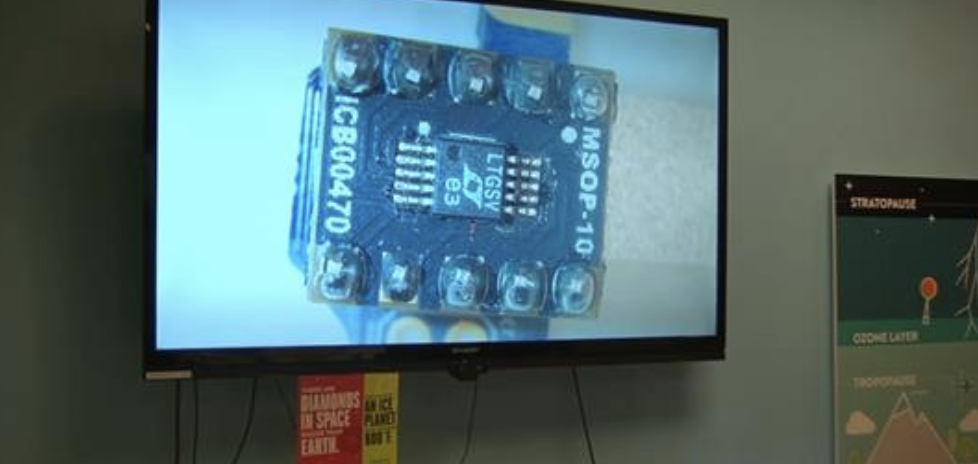
Top Education Stories You Don’t Want to Miss – Week of April 1st, 2019
CHICAGO PROUD: Teens’ satellite to orbit earth
By Jesse R Kirsch for ABC 7
“On April 17th, an Antares rocket takes off for the International Space Station. But the upcoming mission includes an extra payload: bundles of small student-made satellites called ThinSats. Adler Planetarium Systems Engineer and Educator Jesús García described ThinSats as “many slices of bread all put together that will fold out like accordions and fly a round orbit around our planet.” The project is funded by Virginia Space, which sent STEM equipment to schools and educational institutions. Here in Chicago, the Adler team wants to specifically use light sensors to look beyond our solar system. “We’d like to identify whether we can see land features, such as polar ice caps, water, vegetation…. Can we identify that on our own planet with rudimentary sensors as if we were looking at an exoplanet,” explained García. Throughout last school year he taught ITW Speer Academy seniors coding, soldering and circuitry at Adler’s Far Horizons lab. The finalized ThinSat was sent to Virginia Space to be packaged up with other experiments, all launching on April 17.”
On anxious day, slightly more Chicago students will get their top choice of high schools
By Cassie Walker Burke for Chalkbeat
“When decisions about high school acceptances post later today on GoCPS, 16.2 percent of Chicago eighth-graders will get their top pick of the city’s most competitive test-in high schools, a 2 percentage point increase from last year’s 14.4 percent. In all, 24.2 percent of students will get accepted into one of their top three selective enrollment choices, according to data provided Friday by Chicago Public Schools. Chicago has 11 selective enrollment high schools, and seats at these schools are among the most competitive in the district. Students can rank up to 20 choices from among 250 programs in more than 130 schools — and among those they can choose a maximum of six selective enrollment schools — on a universal application system called GoCPS that Chicago rolled out last year. Families are anxiously awaiting the decisions and have taken vastly different approaches. Some have spent hundreds on test prep courses, others have completely opted out. The district said 26,619 incoming freshmen participated this year, compared with 26,909 the previous year. One difference: Students who were set on attending their neighborhood school could, for the first time, submit a letter of intent form this year and sidestep GoCPS.”
Payton College Prep again tops list of most competitive CPS high schools
By the Chicago Sun-Times Staff
“Once again, five selective enrollment high schools adjacent to downtown and on the North Side are the most competitive schools in the city, according to newly released data from Chicago Public Schools — with Walter Payton College Prep taking the title of the city’s hardest school to get into. Payton was followed by Northside College Prep, Jones College Prep, Whitney Young Magnet High School and Lane Tech College Prep. Accepted applicants to those schools scored the highest of any students seeking admission to any of CPS’ 11 selective enrollment high schools. The students are granted admission to the schools based on their elementary school grades, standardized test scores and an admissions test. The highest possible score is 900.”
Illinois Among States Suing Over School Lunch Changes
By WBEZ
“Six states and the District of Columbia sued the Department of Agriculture on Wednesday, saying it weakened nutritional standards in school breakfasts and lunches when it relaxed the requirements affecting salt and refined grains last year. The lawsuit in Manhattan federal court asked a judge to overturn the changes, saying they were carried out in an arbitrary and capricious manner. The government “significantly weakened” nutritional standards for sodium and whole grains, according to the lawsuit, without giving the public a chance to comment on them and in opposition to nutritional requirements for school meals set by Congress. The states and D.C. said the standards should be based on recommendations of the U.S. government’s “Dietary Guidelines for Americans,” the National Academy of Sciences and scientific research regarding children’s nutrition. The USDA school lunch program provides low-cost or free lunches and breakfasts in public schools and other institutions. Last year, it served an estimated 30 million children.”
How job-training leadership won a South Side principal a Golden Apple award
By Yana Kunichoff for Chalkbeat
“For Principal Joshua Long, one lightbulb moment happened in the school dish room. Rather than have his students learn to wash dishes in a classroom setting at Southside Occupational Academy, which specializes in helping students with special needs prepare for life, Long decided to repurpose the school dish room for learning. “Why are we going to try to have some decontextualized lesson on how to wash a dish when we can set up a station-based approach?” said Long, who was trained as a speech therapist before becoming a principal. That’s only one of many ways Southside has tailored approaches to educating the special needs population his school serves. Long also overhauled his school’s curriculum, implemented a less punitive discipline process and won funding for students with disabilities to take part in job training. For these and other efforts, Long won the Golden Apple Award for Excellence in Leadership, a prestigious statewide honor.”
